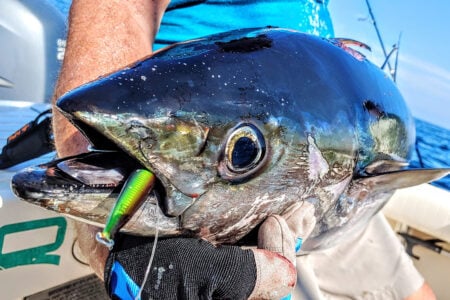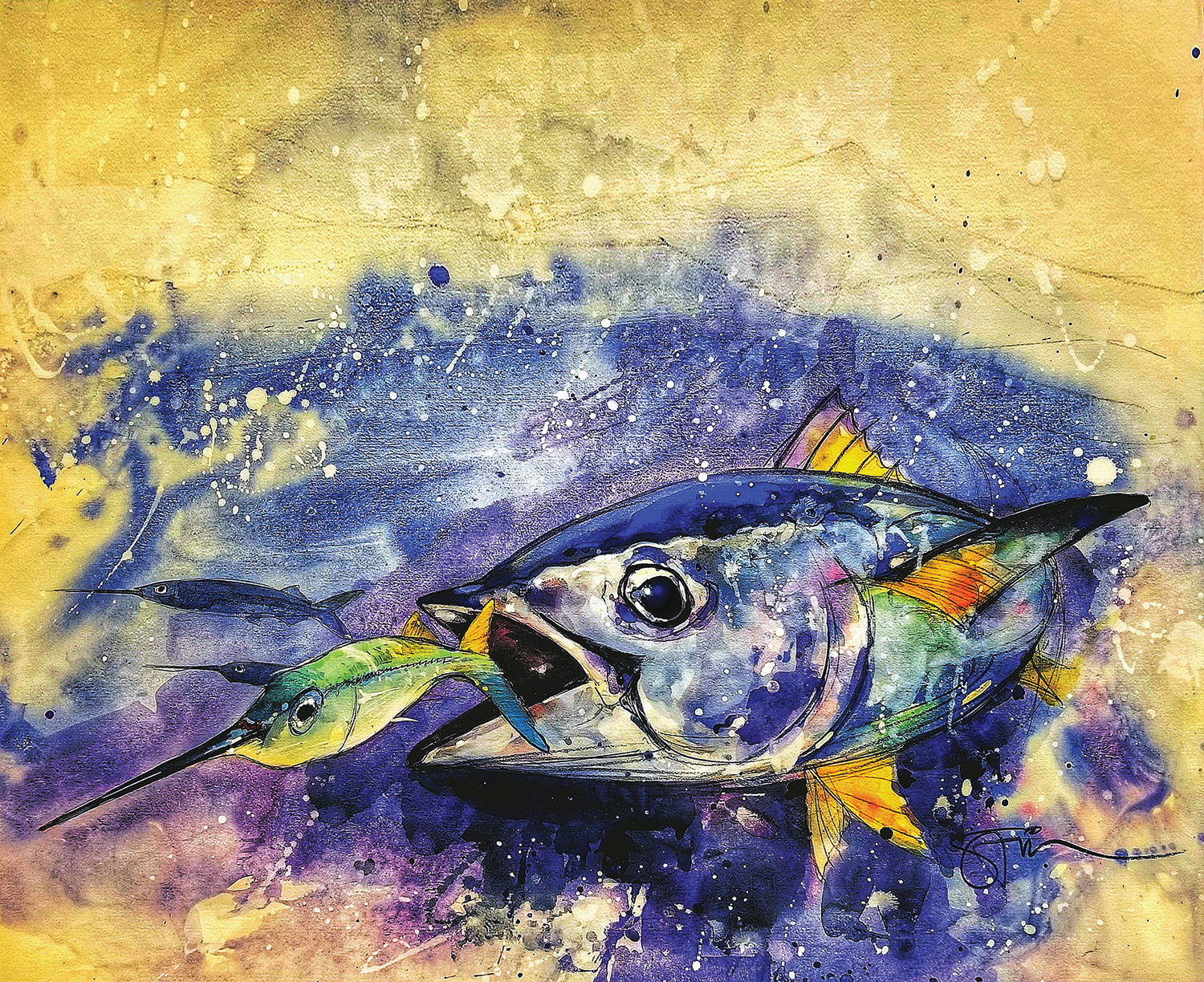
They are readily available and with proper rigging techniques are deadly on tuna.
Are you torn between using natural baits or artificials when it comes to trolling for tuna? There is a third option – use both. Skirting a rigged ballyhoo has been a go-to option that was pioneered by tuna fishermen in North Carolina. Often using horse or large ballyhoo, tuna fishermen used lead weighted skirted lures to prevent baits from washing out and to help them track better in rough seas. Lately, skirted ballyhoo have been the hottest offshore baits here in the Northeast. One of the biggest reasons they are so successful is how often they are used. The law of averages suggests that the more you use a given lure, obviously the more success you will have with it. But why are they being used more? One reason is they are readily available, and anglers are taking the time to learn proper rigging techniques.
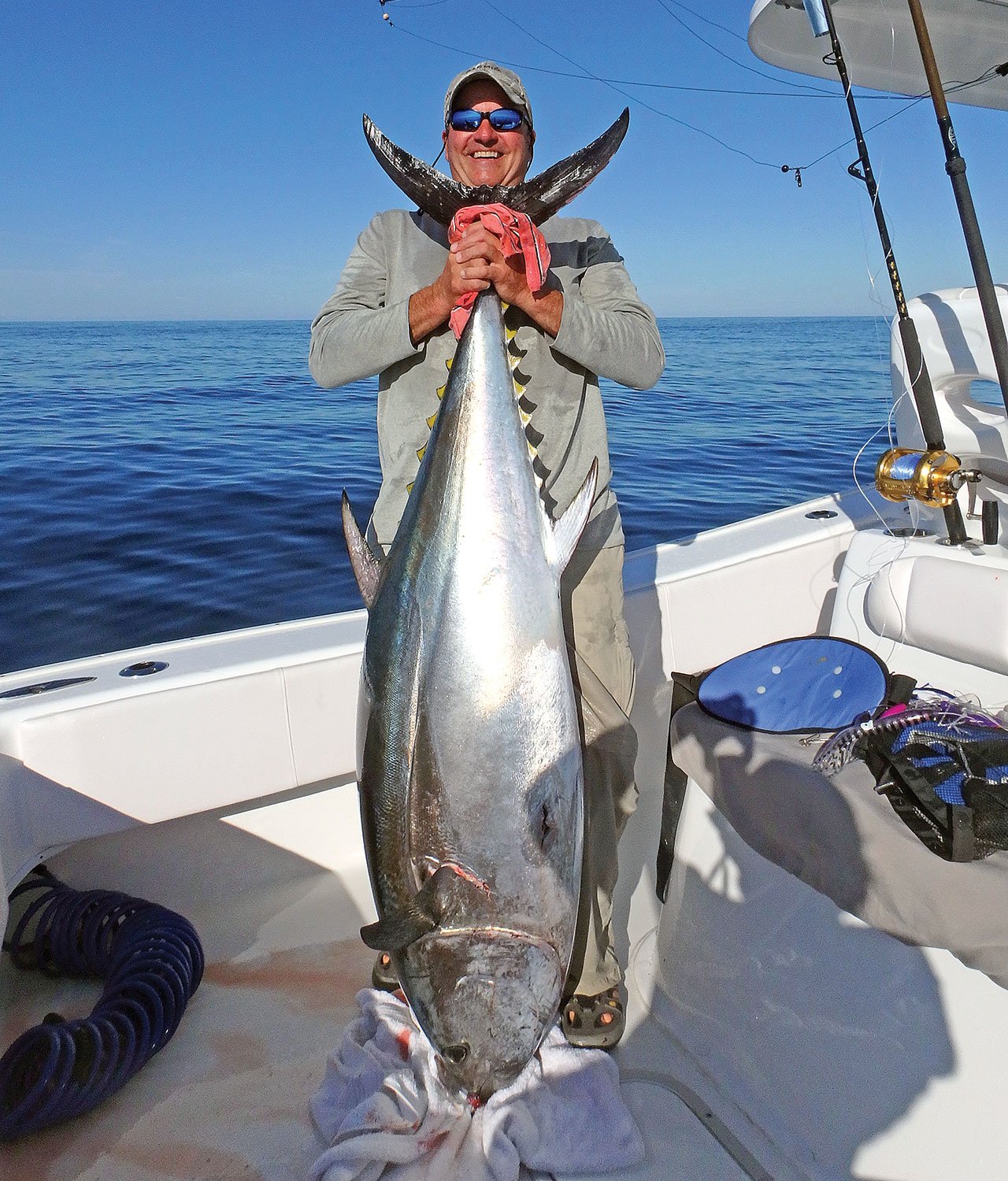
Selection and Care
You can order frozen ballyhoo directly by the case or pick them up as needed from a local bait shop. Call before you go as shops often sell out. If you can find “greenies” early in the season buy a case and store them. Greenies are ballyhoo that have been feeding on a fibrous diet. They have green excrement, hence the name. These early season ballyhoo are extra hardy and troll longer without washing out. The size will depend on your quarry and the lure being used. Horse, or large ballyhoo, are expensive but make great baits when targeting larger bluefin and bigeye tuna. Just make sure that the leader and hook size can handle the larger bait and the tuna it may attract. The most popular size is medium to large that normally come in a 12 pack.
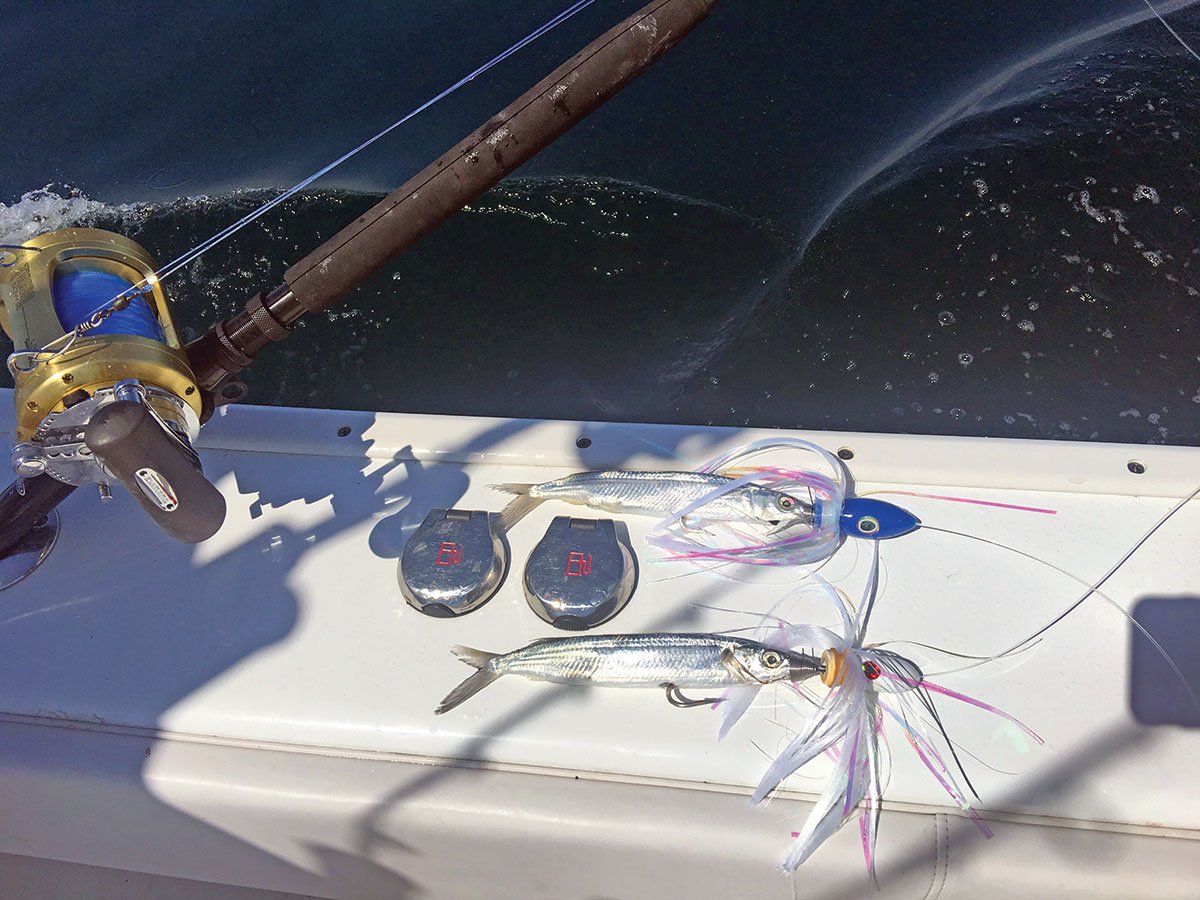
Properly caring for your baits is important. All frozen bait should always remain frozen until you intend to use it. If you defrost it, use it. Don’t refreeze it as the next time you defrost it, it will be mushy. If you can obtain fresh baits you should brine, vacuum seal and freeze them. There are many brine products on the market that are pre-mixed and specifically made to preserve a bait’s natural color and make it hardy. I have always used kosher salt mixed with pancake powder (Bisquick pancake mix). When they are defrosted make sure that your baits do not lay in water. If you use water to speed up the defrosting process keep the baits in their sealed bags. Once opened store the ballyhoo in such a way that they remain chilled, but do not touch ice or water. You can find special bait trays that fit most popular brand and size coolers.
Rigging
There are many videos and separate articles that have been written specifically on techniques for rigging ballyhoo. What anglers are often not aware of is when and how to use the different methods. Pin rigs offer the easiest way to quickly rig and secure a bait. Simply insert the hook and push the pin through the lower and upper jaws, and use a rubber band or spring to secure it. To make a trolled bait dig in, dive, and pop use the split bill method. By creating a notch and sliding the leader into it, you change the pull angle. The bait’s head is angled down, and it will catch water and dig in. Adding chin weights is another way to alter the bait’s swimming pattern. This works well in choppy conditions. Always “poop” your bait prior to rigging to make it flexible.
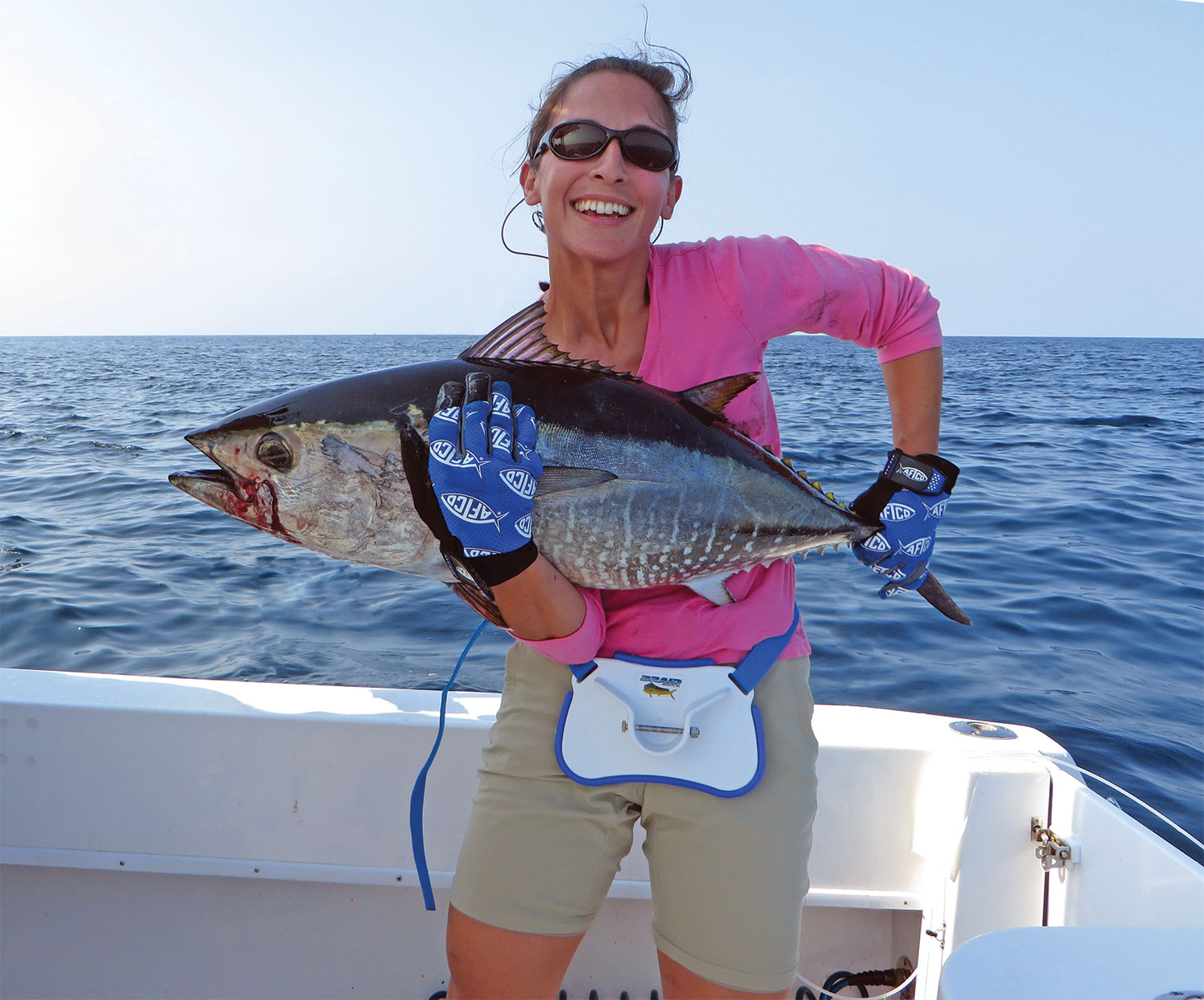
There are several ways to make it swim side to side. For the most part it’s all about the bait’s spine. You can simply snap it in several locations to make it pliable. Just don’t manhandle it as you will knock off scales and create soft spots and discoloration. There are notched tools that are designed to be inserted and turned that snap the spine from the inside. There are also tools made to remove the spine completely. Most anglers like to remove the eyes. A simple wooden dowel will do the trick. Get one slightly longer than the mouth of a 5-gallon pail. This will enable you to suspend your baits as they are waiting to be rigged. You can also buy pre-rigged baits. If you do and you want to troll them skirted, you can purchase TN Tackle’s Dredge Treats. These are skirts especially designed for dredges, so they have a 1/4-inch center hole to allow crimps or dredge pins to easily pass through. Because of this they are a perfect choice to add to pre-rigged ballyhoo. Simply push the crimped loop end through the enlarged center hole and slide it down and over the ballyhoo’s nose.
Dredges
Tournament fishermen have been using dredges forever. Historically they are expensive, and time consuming to set up. A tournament boat will assign a mate the job of rigging dozens of ballyhoo or mullet to be used on a chandelier shaped dredge. Over time, dredges have made their way onto many recreational vessels as well, for the simple reason that they work. As they gained popularity, many better “mouse traps” have evolved. TN Tackle’s Dredge Treats coupled with rigging pins and nose springs make short work of the rigging task. You can pre-rig your baits, connect, and change them out on the fly. It allows you to mix skirted baits on the inside and naked baits on the outside in 1, 2, or 3 tiers. Dredges can have anywhere from 12 to 48 ballyhoo on them. This simplified method has put these tools in the arsenals of many more avid offshore fishermen.
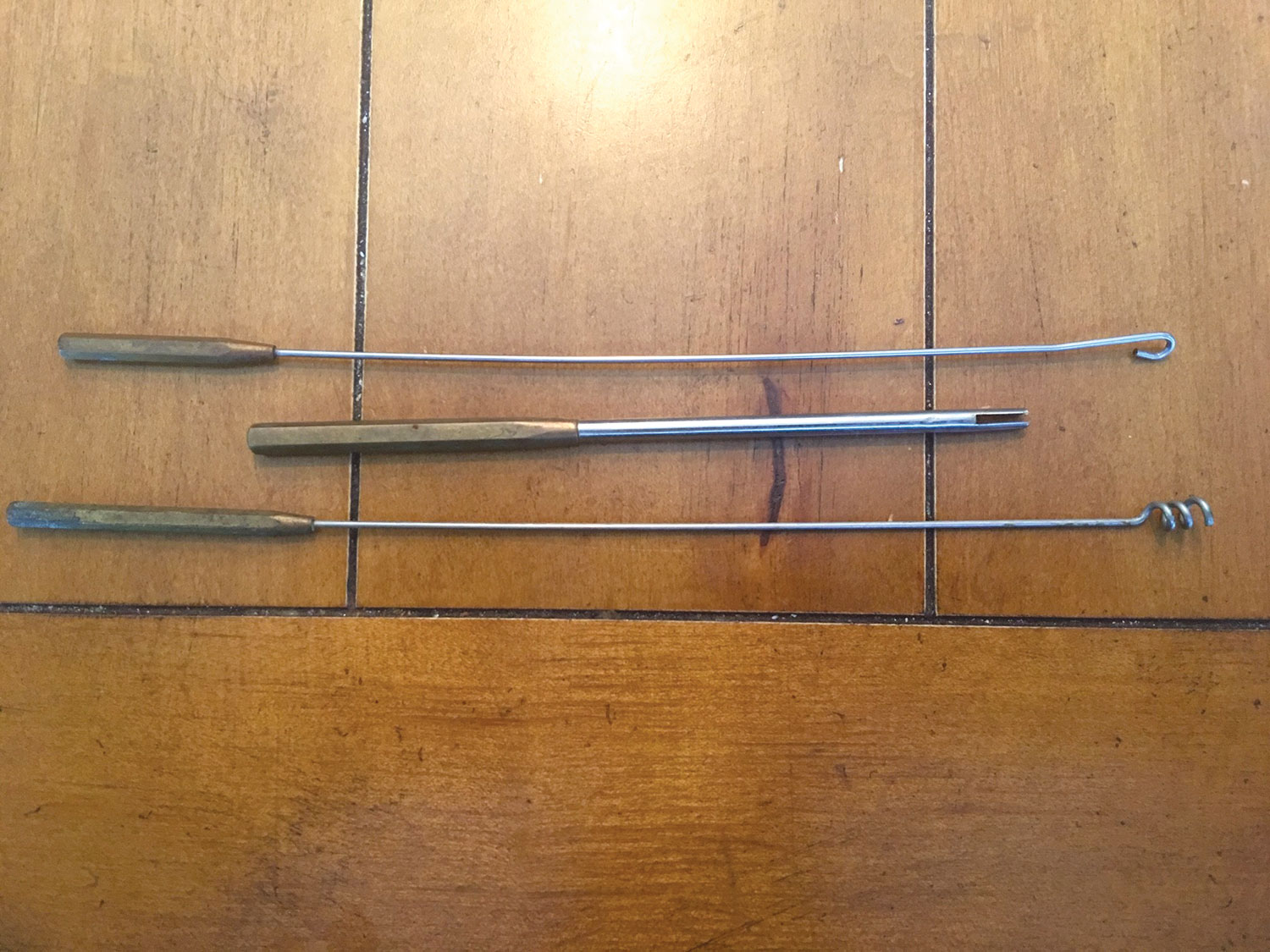
Heads and Skirts
Recently every fishing report you read mentions Joe Shutes in combination with ballyhoo. The brand Joe Shute has become synonymous with skirted ballyhoo. What many anglers don’t realize is how many options they have and the way they work. The original “Sea Witch” style head was produced in North Carolina. The bullet heads and hair were purchased separately, and anglers quickly tied up the color combinations they desired. Joe simplified the process offering them pre-tied in assorted colors and ready to go. They are very forgiving lures that allow marginally rigged ballyhoo to swim straight and catch fish. However, they also hinder the side to side swimming action of properly rigged baits. These too, will simply track straight. As you become better at rigging you should consider graduating to other heads that allow properly rigged baits to swim more naturally. If you want to compete in tournaments or just like to increase your odds of tangling with more fish, you must take off the training wheels! Get away from those heads that weigh 8 ounces or more. Look to lighter, keel weighted resin lures that allow the ballyhoo to swim like a snake. There is a time and a place for all these lures in your arsenal. The heavier options are great for those days when the seas are kicking up a bit. They also have a better hook up ratio when targeting larger fish. The weight prevents the lure from being pushed away as the fish attacks it. Another option is to add chin weights. This will mask rigging inadequacies, but again also takes away from the ultimate presentation.
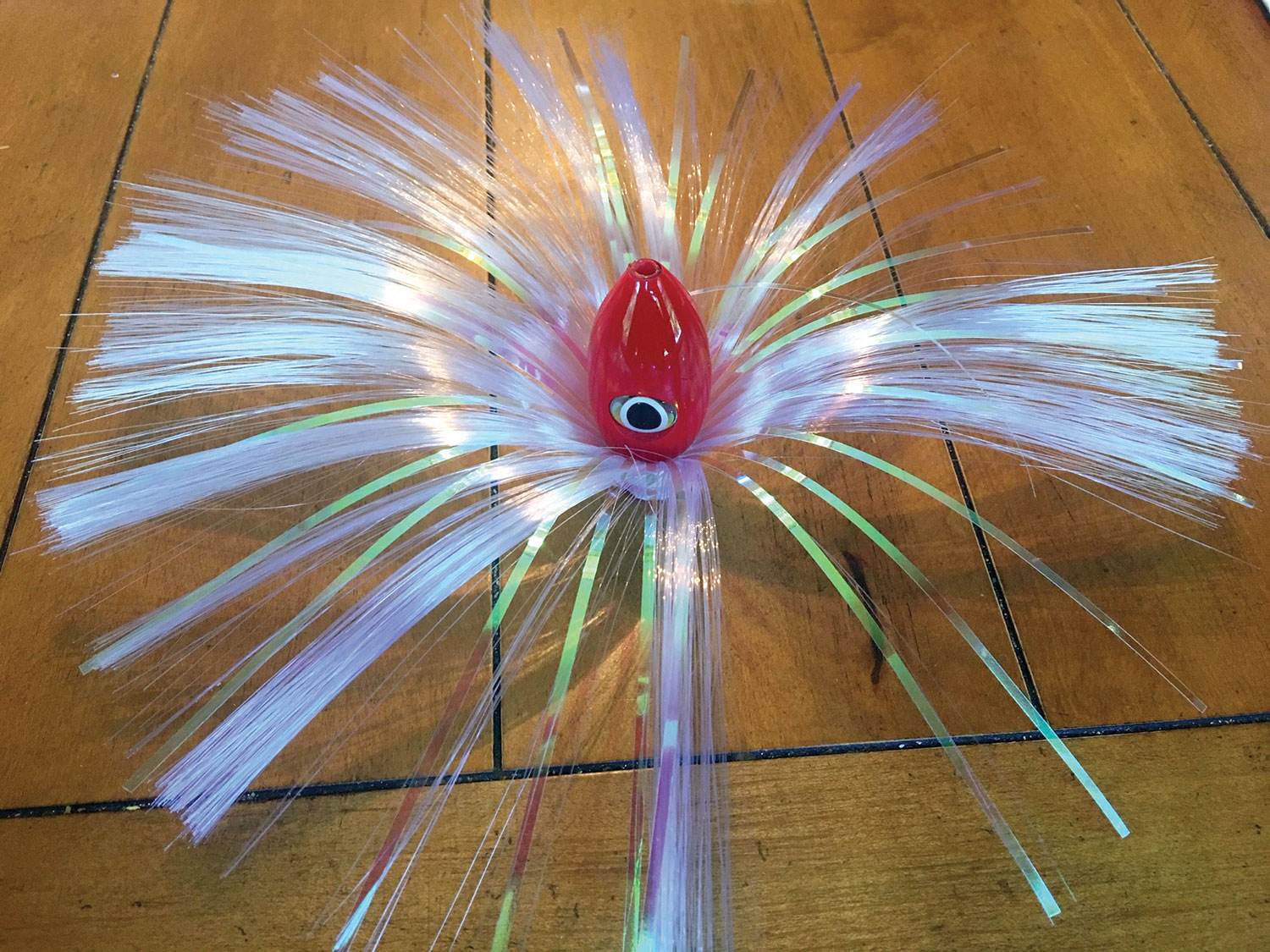
One of the most popular options in the Northeast, especially on the tournament circuit, is the TN Tackle Hoo Head. These are made of UV resin and keel weighted. What separates them from most of the competition is their attention to detail. The heads aren’t out sourced. They are all individually poured, and keel weighted to preform flawlessly, or they don’t make it out the door. They do not cut corners on materials so you don’t have to worry about the heads chipping. UV enhanced lures help make baits look “alive.” UV will help increase the chances of getting bit, especially in the early mornings and late afternoons. The most popular is the 3-ounce model in a blue or pink head with crystal hair.
Follow the fishing reports and also look at pictures for signs of lures and color. See what captains are using. Try slowing the troll down and swimming naked. If you can rig and troll naked ballyhoo you are way ahead of the pack. Next step would be to add light headed skirts that allow your swimming ballyhoo to work its own mojo. The skirt adds some flash and prevents wash out, but should allow the bait to swim side to side. You will become more successful as you become a better rigger and understand when and how to take advantage of the various options.


